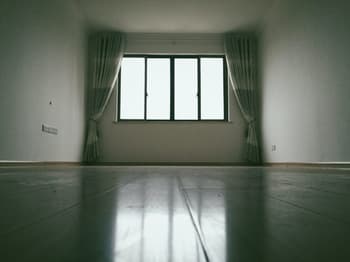Entering into a lease and setting up your business is an exciting step in your business journey. When entering your lease, you need to consider how you want to undertake fit-out works to make your premises suit your business needs and brand. In some cases, landlords will provide tenants with specific incentives to make their premises more attractive. It is essential to understand what incentives the landlord is offering or providing to you and how these will affect your obligations under the lease. This article will explore fit-out incentives and when (or how) a landlord may claw back this incentive.

Need to exit your commercial lease early? Download this free guide to understand your options and avoid costly mistakes.
What is a Fit-Out Project?
A fit-out project typically involves renovating or refurbishing the internal areas of the premises to suit your business needs. This would generally involve some construction work that substantially changes the layout of the workspace. For example, it could involve implementing a commercial kitchen and turning old office spaces into cafes. The fit-out is the process of installing fittings and fixtures, appliances and decorative touches to the interior premises.
These incentives encourage tenants and assist with onboarding costs for tenants.
What Permissions Are Needed?
Before you can carry out your fit-out, you will need the landlord’s approval. Your lease agreement will usually require that you provide drawings and specifications of the fit-out plans. So, you will need to source a professional contractor or builder to assist you in preparing these. Furthermore, you could require council approval for some of the fit-out works. Leases usually put the responsibility of obtaining any council or authority approval on the tenant. This may include requiring you to obtain documents such as:
- development approval; or
- complying development checklist.
What are Fit-Out Contributions?
A fit-out contribution is a commercial lease incentive that applies to a tenant’s fit-out. In this case, the landlord will pay for all or part of the fit-out costs for a new tenant. A landlord can pay this contribution on a reimbursement basis, whereby you provide them with receipts showing the fit-out costs. The landlord will then pay those costs accordingly.
If your landlord is offering a fit-out construction, it is essential to understand when and how the landlord will pay. Often a landlord will not pay the fit-out contributions until you:
- execute the lease;
- provide the required security under the lease;
- take out the necessary insurance policies; and
- submit the relevant plans of the works.
Additionally, the landlord may require you to produce several quotes for the fit-out work. In this case, the landlord may decide to pay the cheapest quote you provide.
Continue reading this article below the formRelevant Documents and Provisions
In most cases, your landlord will require you to enter into an incentive deed and the lease agreement if they provide fit-out contributions. The incentive deeds will detail the incentive agreement and each party’s rights and obligations concerning the incentive. Furthermore, you should review this deed alongside your lease so you are aware of any conditions the landlord puts on the incentive. Often the landlord will incorporate a clawback or payback provision in the lease or incentive deed. A clawback provision requires the tenant to pay back the incentive amount if you ‘trigger’ a particular event.
For example, in many incentive deeds, the landlord will require that the tenant will:
- stay in the lease for the entire term;
- not breach any terms of the lease; and
- not sell their business, thereby transferring the premises to another tenant.
Are Clawbacks a Penalty Provision?
A penalty is a clause that sets a harsh monetary punishment for the breach of a contract term or failure to uphold contractual obligations. Some clawback provisions can be a penalty in the eyes of the law and, therefore, unenforceable. However, according to case law, clawback provisions are enforceable under certain conditions and are attractive to landlords as they discourage tenants from exiting their lease.
Case Law Example
According to the case of GWC Property Group Pty Ltd v Higginson & OR’s (2014), clawback provisions will likely be a penalty. This means it may be difficult for a landlord to enforce clawback provisions if they do not represent a genuine pre-estimate of the landlord’s loss. Furthermore, the amount you must pay back in a clawback of a fit-out contribution must not be extravagant or unconscionable compared to the maximum loss the landlord could possibly suffer. In this case, the court stated that had the tenant not broken the lease and continued to its end, they would not have been responsible for paying for any of those incentives. This includes the fit-out contribution, as this was part of the consideration for the tenant’s entry into the lease.
It will be helpful to note that each case will differ depending on the relevant circumstances. Therefore, it is critical to seek legal advice when reviewing these types of provisions from the beginning to ensure that you do not face any surprises in future.
Landlord’s Works
You may also be responsible for paying for some (or all) of the landlord’s fit-out costs. In some cases, the landlord may also conduct your fit-out on your behalf. This will mean that the landlord will be responsible for all the works of your fitout and will have complete oversight of the works. Additionally, some benefits you can receive include:
- you will not have to worry about the project management of the works;
- you can focus on your business; and
- the project can assist with cash flow.
However, some of the cons to this include losing control and oversight of the project.
Do I Need to Be Nominated as a Principal Contractor?
As fit-out works are construction projects, Work Health and Safety (WHS) laws in each state require the nomination of a principal contractor. The principal contractor on a construction project must manage and control the WHS risks concerning that work. Furthermore, the principal contractor is critical in managing the WHS risks on construction projects and will be held responsible if anything goes wrong.
If you carry out the works yourself, you will be responsible and deemed the principal contractor under WHS laws even though the landlord is the owner of the building. If the landlord carries out the works, they may be the principal contractor. Under the lease agreement, it is vital to understand if and when your role may become the principal contractor regarding any works and your associated obligations.
Key Takeaways
In a competitive leasing market, landlords are eager to secure good tenants by offering incentive packages such as fit-out contributions. Therefore, it is crucial to seek legal advice when reviewing lease agreements and incentive deeds or provisions before entering into a lease to ensure that you are not faced with a surprise later on down the track. For example, suppose you find yourself in a situation where you have broken a provision of a deed or lease for fit-out contribution. In that case, it is essential to seek legal advice to determine the costs you may need to pay the landlord.
If you have questions about your trademark rights or need assistance registering your IP, our experienced leasing lawyers can assist as part of our LegalVision membership. You will have unlimited access to lawyers to answer your questions and draft and review your documents for a low monthly fee. Call us today on 1300 544 755 or visit our membership page.
Frequently Asked Questions
A landlord might incentivise the tenant to make their premises more attractive. Some examples of incentives include rent-free periods, rent abatement and fit-out contributions.
A fit-out contribution is a commercial lease incentive that applies to a tenant’s fit-out. In this case, the landlord will pay for all or part of the fit-out costs for a new tenant.
We appreciate your feedback – your submission has been successfully received.











